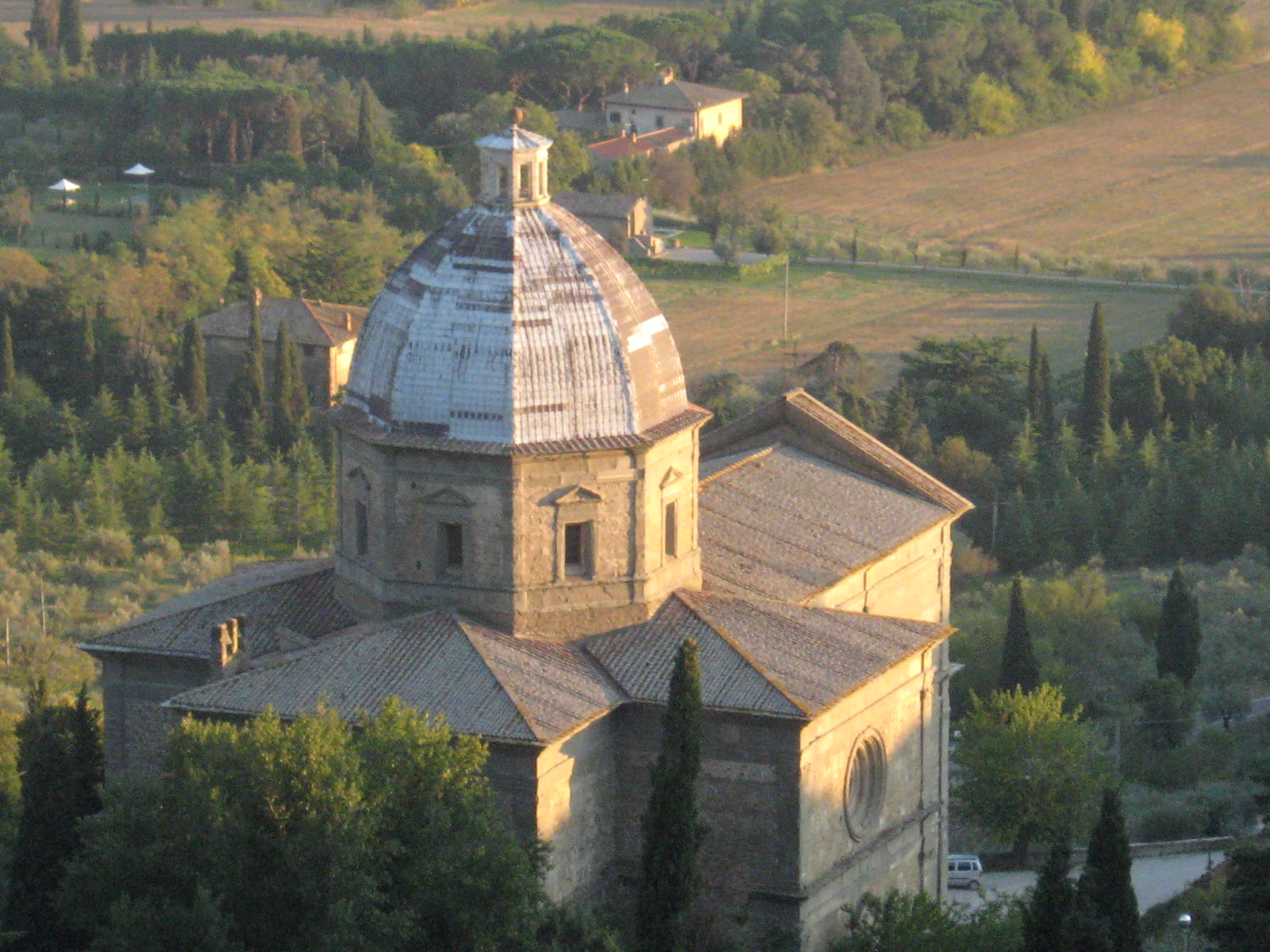The church of Santa Maria Nuova is located in Cortona, near Arezzo in the Diocese of Arezzo – Cortona – Sansepolcro. Designed by the architect Battista Cristofanello, the building of the apse began in 1550. On his death in 1553 the project was taken over by Giorgio Vasari who made side entrances to he church and gave importance to the presbytery by inserting two chapels. The plan of the building is of great interest. It shows a centralized scheme, with the Greek cross placed in a square and covered by a dome (not completed until the seventeenth century). Four mighty pillars rise to support the drum of the dome.
Among the works of art of note in this church are the Nativity by Alessandro Allori, and San Carlo Borromeo bringing communion to those afflicted by the plague by Baccio Ciarpi, and the Annunciation by the Florentine painter Empoli.
THE WOODEN CHOIRSTALL ORGAN:
Located in the church of Santa Maria Nuova (formerly Church of the Collegiate Illustrious) at Cortona in the Diocese of Arezzo, Cortona and Sansepolcro. The organ is located, in cornu evangelii, in a Wooden seventeenth century structure placed against the wall, painted and gilded. Built in 1613 by Cesare Romani (Cortona 1544-1616) with the collaboration of his son Augustine (Cortona 1581-1618). The structure and the choirstall (1615) are the work of Mariotto Radi, and gilded (1654) by the tifernate Domenico Sellari.
CHURCH of San NICCOLO, CORTONA
The church of San Niccolò is located in the street named after it in Cortona, near Arezzo in the Diocese of Arezzo – Cortona – Sansepolcro. It’s history is linked to San Bernardo of Siena, who in 1440 founded the Society of San Niccolò. The church overlooks a large rectangular churchyard with a hill rising up to the left and to the right a wall from which a splendid panorama may be had. The entrance is through a portico that adorns the façade and flanks the left side of the building. The interior was completely rebuilt between the seventeenth and eighteenth centuries: it has three baroque altars and a beautiful coffered ceiling dating 1768.
The banner of the Company di San Niccolò, painted in 1510 by Luca Signorelli, is placed in a prominent position on the high altar. Painted on one side is the lamentation of the death of Christ, on the other is the Madonna and Child with Saints Peter and Paul.


